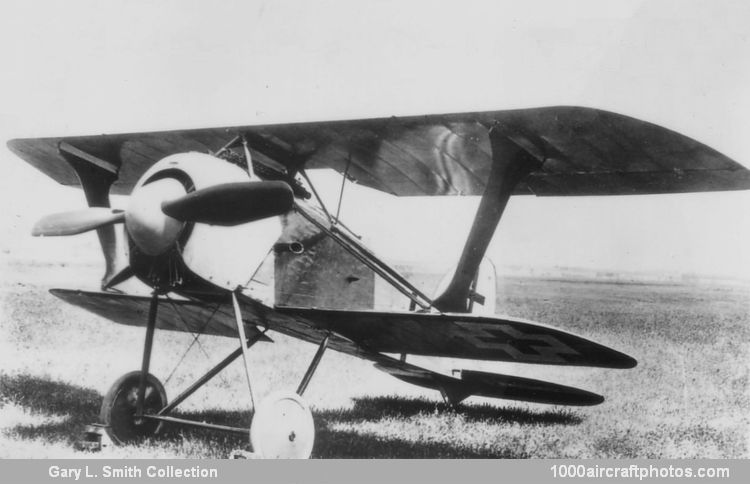Two prototypes (s/n D.2208/18 and D.2209/18) were ordered by the Idflieg, construction of the latter was completed in March 1918, but supply problems of the 160 hp Siemens & Halske Sh.III engine delayed the first flight till May 1918. D.2209/18 had an unusually large two-blade propeller necessitating an exceptionally tall landing gear; it had unbalanced ailerons of inverse taper. Armament comprised the usual twin 0.312 in (7.92 mm) Spandau machine guns.
D.2209/18 participated in the Second Fighter Competition in June 1918, showing average performance, but too docile control response, it crashed and was destroyed upon landing. This, and the priority given to other aircraft using the Sh.III engine, contributed to Idflieg eliminating the D.XI from production consideration.
Albatros continued development work, and the second prototype, D.2208/18, which had larger balanced parallel-chord ailerons, a smaller four-blade propeller and a shorter landing gear, participated in the Third Fighter Competition held October 10 to November 2, 1918. Even with these modifications, the control responses were too docile, and again the D.XI was not selected for production. D.2208/18 was destroyed by the allies in early 1920.
Span: 26 ft 3 in (8.00 m)
Length: 18 ft 3.5 in (5.58 m)
Wing area: 199.13 sq.ft (18.5 sq.m)
Weight empty: 1,089 lb (494 kg)
Loaded weight: 1,519 to 1,594 lb (689 to 723 kg)
Max speed: 118 mph (190 kmh)
Climb: to 6,560 ft (2,000 m) 4 min 39 sec
Service ceiling: 9,843 ft (3,000 m)
Endurance: 1.5 hr
